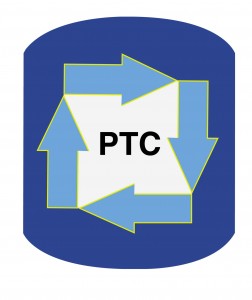I am requesting the help of those of you who are much better organic chemists than me. Please contact Marc Halpern of PTC Organics with a possible explanation of the mechanism of the reaction shown in the diagram. While it is obvious that the chlorophenoxide is formed, it seems surprising that toluene is not inert in this reaction.
The procedure reported in the patent CN116023238A (Shandong Xinhua Saroya Biotechnology Co Ltd) is as follows: “Tetrabutylammonium bromide (0.2 mmol), potassium t-butoxide (2.0 mmol) and 4-chlorophenol (1.0 mmol) and toluene (2.0 mmol) were added to the reaction flask under air, 4mL of tetrahydrofuran was added thereto, and finally 8g of ferromagnetic rod was added. The reaction flask was placed in a magnetic mill and reacted for 3 hours. And monitoring the reaction progress by TLC, namely determining the reaction completion, cooling the system to room temperature after the reaction completion, dissolving out the mixture in the bottle by using ethyl acetate, adding water for extraction for three times, taking an upper organic phase, adding anhydrous sodium sulfate for drying, adding silica gel for spin drying, carrying out column chromatography, and separating to obtain a target product with the yield of 86%.”
Following are more data to help you figure out the effects of various process parameters.
The yield after 1 hour was 36% and after 2 hours was 53%.
When using only 1 equivalent of toluene, the yield was 36%. The yield when using 1.5 equivalents of toluene was 53%. The yield when using 2.5 equivalents of toluene was 81%, so there was no benefit increasing the excess toluene beyond 2 equivalents.
Reducing the TBAB from 20 mole% to 5 mole% reduced the yield to 26%. Using 25 mole% TBAB gave a yield of 82%, so there was no benefit increasing the TBAB loading beyond 20 mole%.
When using 7 g ferromagnetic rod instead of 8g, the yield was 75% and increasing the amount of ferromagnetic rod to 10g resulted in a yield of 81%.
Reducing the t-butoxide loading from 2 equivalents to 1.5 equivalents reduced the yield to 72%. Increasing the t-butoxide loading from 2 equivalents to 2.5 equivalents resulted in the same high yield of 86%, so there was no benefit to increasing the t-butoxide beyond 2.0 equivalents.
Replacing he TBAB with TEBAC (benzyl triethyl ammonium chloride) reduced the yield to 70%.
Replacing the TBAB with tributylamine or pyridine gave yields of 20%.
Replacing the THF with acetonitrile resulted in 30% and replacing the THF with DMF resulted in a 32% yield.
Different substituents: Using meta-xylene instead of toluene gave 53% yield, using o-methylbenzonitrile gave 78% yield, using o-methylnitrobenzene gave 73% yield, using methyl p-methylbenzoate gave 82% yield, using m-chlorotouene gave 52% yield.
Please contact Marc Halpern of PTC Organics with a possible explanation of the mechanism of this reaction.



C alkylation of phenols has been previously observed under PTC conditions. https://www.sciencedirect.com/science/article/abs/pii/S2468823121001838
as is supported by the formation of RN4+PhO―(PhOH) complex
one would need to look at the role of Ferromagnatic material in the formation of a radical or radical anion-cation pair that ultimately forms benzyl bromide.
Just thoughts.